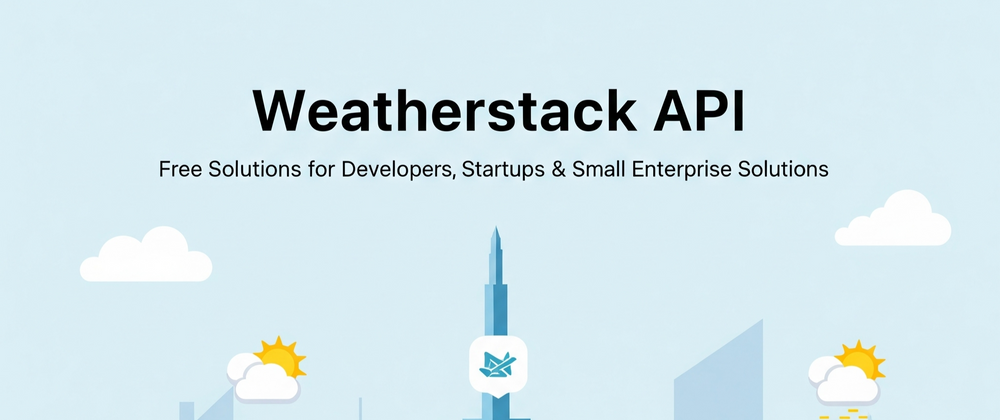Building weather-aware applications has become essential across industries—whether it's travel, logistics, event planning, or agriculture. Accurate and timely weather data can improve decision-making, user engagement, and overall app functionality. If you're a backend developer, learning weather API integration using weather API Node.js is a valuable skill.
This article covers how to integrate weather APIs in Node.js, explains common use cases, and shows how small teams and solo developers can create powerful weather-enabled applications.
Why Weather API Integration Matters
APIs simplify access to weather data. Instead of building your own weather database or scraping unreliable sources, you can fetch data directly from a weather service provider with just an HTTP request.
With weather APIs, you can:
- Display real-time and forecasted weather.
- Trigger alerts based on upcoming weather conditions.
- Log historical weather for analytics.
- Build weather-based recommendations or automation.
Whether you're building a website, mobile app, or dashboard, weather API integration adds meaningful context for your users.
Getting Started with Weather API in Node.js
Let’s walk through how to connect to a weather API using Node.js, a popular JavaScript runtime for backend development.
Step 1: Choose a Weather API
Pick a provider like weatherstack that offers:
RESTful API endpoints
JSON responses
Easy documentation
Free plan for developers
Step 2: Generate Your API Key
Sign up and get your unique API key. This key authenticates your requests to the API.
Step 3: Install Axios or Fetch
We’ll use axios, a promise-based HTTP client.
bash
CopyEdit
npm install axios
Step 4: Make an API Call
Here’s a basic example fetching current weather in Node.js:
javascript
CopyEdit
const axios = require('axios');
const API_KEY = 'YOUR_API_KEY';
const CITY = 'London';
const getWeather = async () => {
try {
const response = await axios.get(
http://api.weatherstack.com/current?access_key=${API_KEY}&query=${CITY}
);
console.log(response.data);
} catch (error) {
console.error('Error fetching weather:', error.message);
}
};
getWeather();
You can now fetch weather data and use it in your app logic.
Use Cases for Weather API in Node.js Applications
Travel Booking Websites
Display weather conditions at destinations during booking.
Agritech Platforms
Advise farmers about upcoming rain, drought, or frost.
Event Scheduling Apps
Suggest optimal event times based on weather forecasts.
E-commerce
Trigger product promotions (like rain gear) based on regional weather.
Benefits of Using Node.js for Weather APIs
- Non-blocking I/O: Great for handling API requests asynchronously.
- Fast development: Huge ecosystem of packages (like axios, dotenv, etc.)
- Scalability: Handle multiple weather data requests in real time.
- Ease of use: JavaScript across front and back ends for full-stack consistency. Combining Node.js with clean APIs makes weather data integration both fast and efficient.
Tips for Smooth Weather API Integration
- Use environment variables for your API keys to keep them secure.
- Handle errors properly to avoid broken app behavior.
- Cache responses when possible to reduce API calls.
- Throttle API usage to stay within rate limits.
Follow documentation closely for advanced endpoints like historical or forecast data.
FAQs
Q1: Is Node.js good for weather API integration?
Yes. Node.js is lightweight, asynchronous, and ideal for calling APIs and processing JSON data quickly.
Q2: Do I need a paid plan to integrate a weather API in Node.js?
No. Most weather APIs like weatherstack offer free plans suitable for development and testing.
Q3: What type of data do weather APIs return?
APIs typically return temperature, humidity, wind speed, precipitation, UV index, and weather descriptions.
Q4: Can I use weather APIs for forecast data?
Yes. Many APIs provide 7-day or even 14-day forecasts depending on your plan.
Q5: What happens if I exceed the free tier limit?
You may receive error responses or your API key may be rate-limited. Consider upgrading if needed.
With simple weather API integration, developers can build rich, weather-aware applications in no time. Using weather API Node.js code, you can quickly connect to external APIs, fetch real-time weather data, and enhance your user experience with minimal setup.
Start with a reliable and developer-friendly platform like weatherstack to explore real-time, historical, and forecast data — all with RESTful design and easy integration.




Top comments (0)